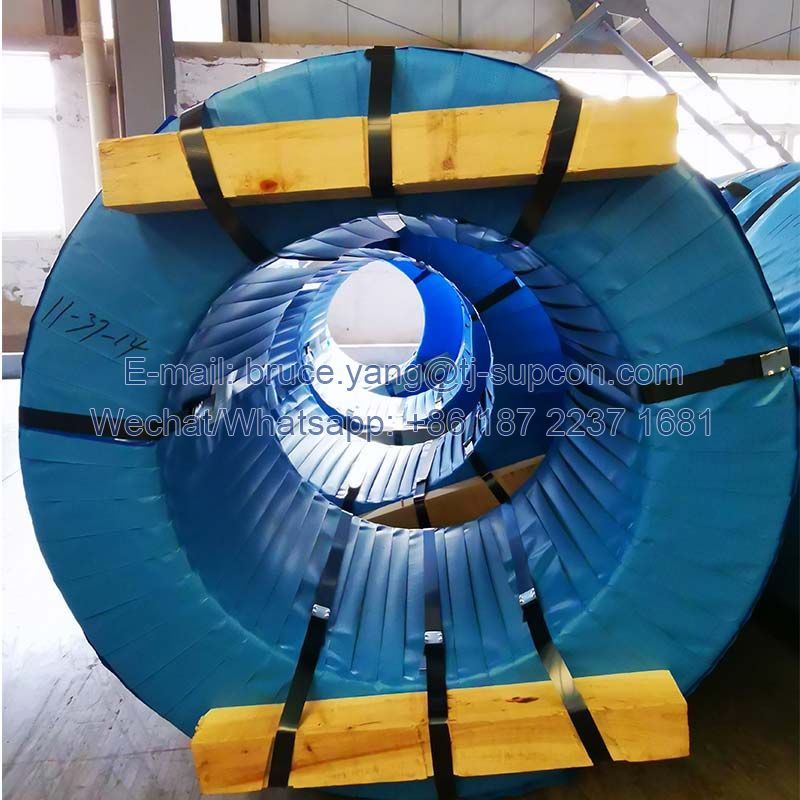PC Strand Bonded: Enhancing Structural Integrity in Concrete
Concrete is the backbone of modern construction, known for its durability and versatility. However, to meet the demands of large-scale projects like bridges, high-rise buildings, and industrial facilities, reinforced concrete is often required. One essential component in reinforced concrete is the PC strand bonded, a high-strength steel cable that plays a critical role in enhancing the structural integrity of concrete structures. In this article, we explore the significance of PC strand bonded and its applications in the world of construction.
Understanding PC Strand Bonded:
PC strand bonded, or bonded prestressed concrete strand, is a composite structure consisting of a bundle of high-strength steel wires or strands that are tightly bound together using a helical rib wire and surrounded by a protective cementitious grout. The bonding of the steel strands to the grout is a fundamental characteristic that sets it apart from its unbonded counterpart. This bonding allows for the transfer of stress from the steel strands to the surrounding concrete, making it an integral part of the structure.
The Role of PC Strand Bonded:
Enhanced Load-Bearing Capacity:
The primary function of prestressed concrete PC strand bonded is to introduce compressive stresses into the concrete structure before it undergoes external loads. This prestressing process significantly enhances the load-bearing capacity of the concrete, allowing it to withstand greater forces without failure.
Reduced Cracking and Deflection:
The use of bonded PC strands helps reduce the development of cracks and minimizes deflection in concrete structures. By applying compressive forces through the strands, tensile stresses that would typically cause cracking are offset, resulting in a more robust and resilient structure.

Optimized Structural Design:
Engineers can design structures with slimmer cross-sections and reduced material requirements when incorporating PC strand bonded. This prestressing technique not only enhances structural performance but also provides cost-saving benefits by minimizing the amount of concrete and steel required.
Applications of PC Strand Bonded:
Bridges:
Bridges are among the most prominent applications of PC strand bonded. Prestressed concrete beams and girders that support the weight of vehicles and loads use this technology to ensure structural integrity and long-term durability.
High-Rise Buildings:
In high-rise buildings, where the structural elements must bear substantial vertical loads, PC strand bonded is utilized in the construction of columns, floor slabs, and other critical components. This application helps to minimize the effects of gravity and wind loads.
Industrial Facilities:
Industrial facilities, such as factories and warehouses, often require large spans and heavy load-bearing capacity. PC strand bonded is employed in the construction of roof and floor systems to achieve the necessary strength and stability.
Post-Tensioning of Concrete Structures:
In existing concrete structures or those undergoing retrofitting, bonded PC strands can be used for post-tensioning. This technique allows for the strengthening and repair of structures, extending their service life and improving their performance.
Benefits of PC Strand Bonded:
Enhanced Durability:
Bonded PC strands help concrete structures endure the test of time, as they resist the effects of deformation and cracking, resulting in a longer service life.
Economical Design:
The use of PC strand bonded enables more efficient structural design, reducing material and labor costs while maintaining high performance standards.
Increased Safety:
The prestressing effect of bonded PC strands enhances the safety of structures, as it ensures they can withstand both anticipated and unforeseen loads.
Versatility:
PC strand bonded can be tailored to meet the specific requirements of various construction projects, from small buildings to large infrastructure.
In conclusion, PC strand bonded is a crucial technology that has revolutionized the construction industry by enhancing the strength and durability of concrete structures. Its applications range from bridges to high-rise buildings and industrial facilities, and it offers numerous benefits, including increased durability, cost-effectiveness, and improved safety. As construction methods and materials continue to evolve, bonded PC strands will remain an essential tool in the engineer's toolbox for creating resilient and efficient structures that can withstand the demands of the modern world.



